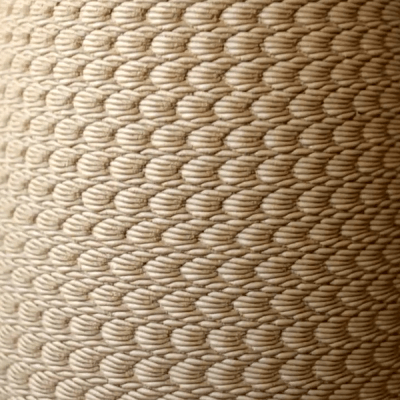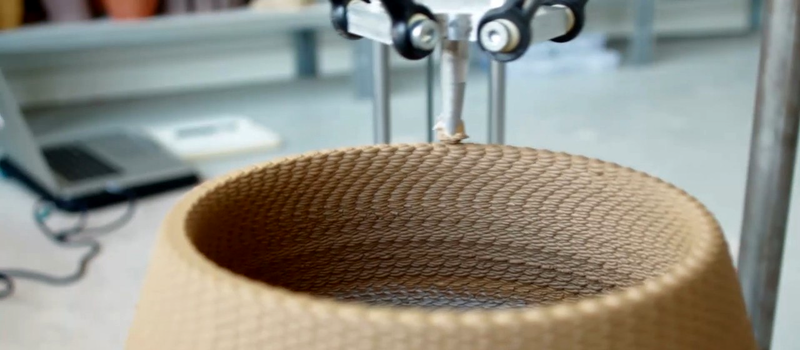An engineer with a 3D printer wants everything to be rigid and precise. Wobble induced by flex in the z-axis feedscrews, for instance, makes telltale wavy patterns in the surface that match exactly the screw pitch. Nobody likes those, right? Certainly not an engineer!
 But one man’s surface irregularity is another man’s ornamentation. The details we have are sparse, but from looking at the video (also inlined below the break) it’s clear enough: [Olivier van Herpt] and [Ricky van Broekhoven] stuck a vibrating woofer underneath the print bed of their ceramic printer, and use it to intentionally ruin their smooth surface. And they do so to great artistic effect!
But one man’s surface irregularity is another man’s ornamentation. The details we have are sparse, but from looking at the video (also inlined below the break) it’s clear enough: [Olivier van Herpt] and [Ricky van Broekhoven] stuck a vibrating woofer underneath the print bed of their ceramic printer, and use it to intentionally ruin their smooth surface. And they do so to great artistic effect!
We’re not suggesting that you give up entirely on your calibrations, but we do appreciate a little out-of-the-box thinking from time to time. But then our internal engineer raises his head and we wonder if they’re linking the pitch of the woofer to the feed rate of the print head. Your thoughts in the comments?















Looks like a good effect for clay. I wonder if it effects the firing process and perhaps lower levels for larger items.
I’m not sure it would work for something that sets quickly. Maybe if we printed in something akin to hot glue.
It does introduce an interesting prospect, magnetically levitated beds. Couple a mechanical system for course adjustment with maglev and that could provide some extremely accurate printing in all directions.
The magnet’s don’t have to lift the weight of the bed. Mount the bed on springs and let the magnet’s defect it. Maybe with permanent magnets or warm compressed air, like an air hockey table, to allow a smooth ride with a double floating bed on the movable bed.
I guess the only problem would be calibration. As the print grows, the changes in mass and distribution of mass would effect the layer hight and leveling.
Thrown clay items often are not as round or as thickness controlled throughout as one might imagine, the medium is rather forgiving and many think these types of anomalies give a piece character.
Instead of moving the bed one could move the printing head itself. This would be the essentially the same solution used by CD players where coarse movement is done by cheap plastic gearing whilst the fine movement is performed by a magnetic cushion that moves the laser head.
I like it! it does look like someone braded the clay ^^
Here you have a similiar effect as to why the early analog mechanical targeting computers worked better in use in an airplane than they did stationary on the ground: the slop and stiction in the mechanism are subject to random jostling and rattle, which averages the error to zero, whereas on the ground and free of vibrations the mechanisms would always stick in the same positions and directions.
Adding vibration at frequencies that avoid resonance can act as a kind of mechanical dither that cancels slop and error in the mechanism and improves overall accuracy.
Well, good point.
While that’s true (to a degree) it isn’t really applicable to this. This is using vibrations to deliberately create texturing, not using vibrations to improve the precision.
On the contrary – the vibration can be used to dither away the sloppy calibration/precision of the machine – not to create distinct wave patterns but by adding random noise to the layers so they blend to one another and leave a smoother finish with less steps and bands.
Or, at least a more pleasing pattern than steps and bands.
What those in the engineering field call, mechanical dither.
Looks like a woven basket.
Nice, I wonder if you can do that in very thin porcelain to create lamp shades?
Why not just design the wobbles into the original print design?
Sometime is easier to just stick a subwoofer under the print bed instead of dealing with trig funcions in openscad.